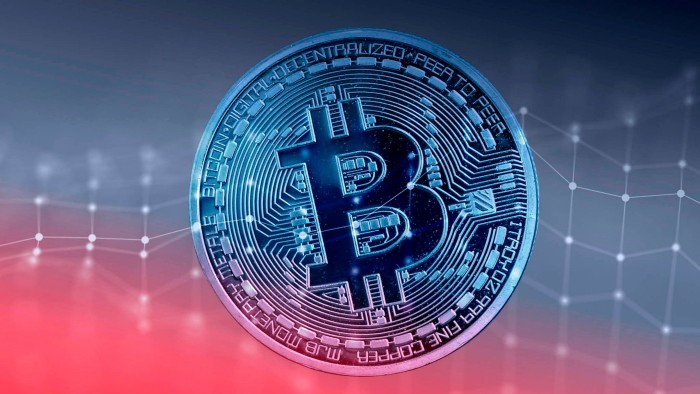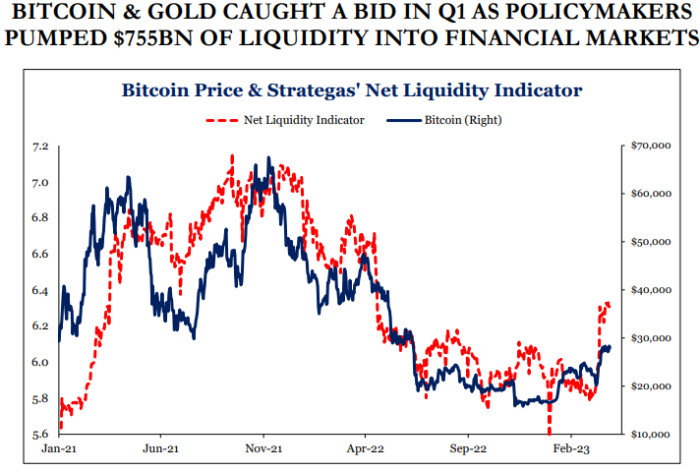
Roula Khalaf, Editor of the FT, selects her favourite stories in this weekly newsletter.
This article is an on-site version of our Unhedged newsletter. Sign up here to get the newsletter sent straight to your inbox every weekday
Good morning. Here at Unhedged our main project for the rest of this week is ignoring the indictment of a second-tier real estate developer from Florida. But that should leave us with a few other things to write about. Email us your ideas: robert.armstrong@ft.com and ethan.wu@ft.com.
Opec flexes, markets unimpressed
Oil rose more than 6 per cent, to $85, yesterday. This was in response Opec’s announcement, over the weekend, that Saudi Arabia would cut its production by 5 per cent, and that members of the Opec+ cartel would follow with cuts of their own. The move was rich with political implications. Many analysts argue it marks a strategic change by the Saudis and their allies, rather than a tactical move to defend a weak oil price. From the FT:
“It’s a Saudi-first policy. They’re making new friends, as we saw with China,” [Helima Croft, of RBC Capital Markets] said, referring to a recent Beijing-brokered diplomatic deal between Saudi Arabia and Iran. The kingdom was sending a message to the US that “it’s no longer a unipolar world”.
This sounds like serious stuff to us. So we were struck by how little markets responded on Monday. Stocks leveraged to oil, from upstream production to oilfield services, popped. But given that sustained higher oil prices are stagflationary, we were a bit surprised to see gains across a variety of other sectors (healthcare, materials, staples). More surprising still, the policy-sensitive two-year bond yield fell nine basis points.
This is particularly notable given that Opec+ has a historically high level of control over oil prices right now, as Goldman Sachs’s Daan Struyven has argued. The addition of the “+” countries (Russia, Kazakhstan, Mexico et al) to the cartel have increased its market share. Greater financial discipline from non-Opec producers, particularly the US, has reduced the price elasticity of global supply. And global demand has become more inelastic because (among other reasons) transportation fuel, which has few substitutes, now makes up a greater share of total demand. If Opec+ wants play for sustained higher oil prices, it is holding good cards.
Furthermore, as our colleague Derek Brower of FT Energy Source pointed out to us, many analysts were already pointing out that oil was positioned for a rally in the second half of 2023, as resurgent demand from China pushed the market into deficit. Struyven, for example, has been saying for months that oil would pass $100 by year-end.
Even if higher oil is not enough to change the growth outlook materially, we would expect some worry about the inflationary effects, given the market’s monomaniacal focus on Federal Reserve policy. Energy is 7 per cent of CPI, and has a powerful impact even on core (ex-food and energy) CPI through transportation services, which has been a crucial swing factor in the inflation measures the Fed cares about most.
So why the indifference? Once again, it looks to us like the soft landing scenario is exercising a hypnotic effect on the market. If you think there is a real threat the economy will keep running too hot, the additional inflationary effects of high oil prices are an unwelcome additional risk. If you think the central forecast is for demand softening enough to bring down inflation, then sustained higher oil prices don’t seem that much of a threat.
For example, here is Capital Economics’ Adam Hoyes:
The [initial] moves in the bond market [with inflation breakevens rising following the Opec + announcement] have more than reversed since the release of the March ISM Manufacturing survey, where the headline index slumped to a new cyclical low and other indices pointed to a further easing in price pressures. We wouldn’t be surprised if this pattern — higher oil prices but lower Treasury yields — continued over the rest of this year, even though they’ve often moved together. Admittedly, we do think oil demand is set to be weak over the rest of this year, with growth in many major economies likely to be sluggish at best.
Hoyes, and various other analysts who struck similar notes, may very well be right. Our point is just that there is part of the probability distribution (20 per cent of it?) where the labour market stays too tight, and economy does not cool materially, and the Fed has to keep rates high. In that tail of the curve, higher oil prices could be a real problem.
Bitcoin’s new old narrative
Bitcoin’s 70 per cent ascent this year happened in two stages. The first was the flight-to-shite that began the year, as dreams of a soft landing and lower interest rates set off a rally in all manner of high-duration junk. The second was the fallout from Silicon Valley Bank’s collapse. As bond yields fell, bitcoin’s price popped. Flows into crypto investment products are at their highest since mid-2022, according to CoinShares.
After a run of eerily stable price action in the second half of last year, this is a big change. A rally amid a banking panic is catnip for bitcoiners. And the new crypto story is the same old crypto story: people are fast losing confidence in banks and are flocking to bitcoin.
Here, for example, is Balaji Srinivasan, formerly a top figure at Coinbase and Andreesen Horowitz, spinning a yarn last month about why a “stealth financial crisis” is poised to bring about hyperinflation and mass bitcoin adoption. He claims to have bet $1mn this will happen by June:
The central banks, the banks, and the banking regulators all knew a huge crash was coming — the phrase is “unrealised losses”. But they never notified you, the depositor . . .
It’s Uncle Sam Bankman-Fried. Just like SBF used your deposits to buy shitcoins, using accounting tricks to fool himself and others into using the money, so too did the banks . . .
They all used the deposits to buy the ultimate shitcoin: long-dated US Treasuries. And they all got [wrecked] at the same time, in the same way, because they bought the same asset from the same vendor who devalued it at the same time: the Fed . . .
So anyone who bet on long-term Treasuries got killed in 2021. And now, anyone who bets on short-term Treasuries is going to get killed in 2023. The absolute worst place you can be is to have large amounts of assets locked up in three-month treasury bills. The ~5 per cent interest rate offered by big banks (G-SIBs) is a trap. Most fiat bank accounts are now a trap, for those countries whose central bankers followed the Fed . . .
This is the moment that the world redenominates on Bitcoin as digital gold, returning to a model much like before the 20th century.
This is a bit loony (what is the worst-case scenario for three-month Treasuries yielding 4.6 per cent?), though first chunk of Srinivasan’s story is legible. Whether banks should’ve accounted for mark-to-market losses on long-dated securities is a live debate. But we can’t make the leap from “long-term Treasuries got killed” to “the world is about to drop fiat currency”.
There’s a more credible story for bitcoin’s bumper quarter: liquidity. Daniel Clifton at Strategas calculates that US policymakers, on net, injected $755bn in liquidity in the first quarter of this year, whereas they were net subtracters of liquidity all through last year. The correlation between changes in liquidity and bitcoin’s price looks tight:

Why should liquidity injections help bitcoin? We liked this illustration from Citi strategist Matt King, on Bloomberg’s Odd Lots podcast last week, of how investors get crowded into riskier assets:
For me, it’s really about this balance between how much money the private sector has relative to how many assets are available to absorb that money . . .
You can’t see all these moving parts, but what I think goes on is that the guy who would’ve bought bills buys bonds, the guy who would’ve bought bonds buys IG credit, the guy who would’ve bought IG buys high-yield, and so on . . .
The best correlations [with central bank liquidity injections] I find of all are exactly with the most popular assets like cryptocurrency or Tesla stock.
In this sense the banking crisis, in forcing a new round of liquidity support, really has helped bitcoin beyond the narrative boost, though not for the reasons Srinivasan suggests. Systemic stresses lift bitcoin not because they discredit the financial system, but because the regulatory responses are good for speculators. (Ethan Wu)
One good read
Some fascinating hedge fund sniping: Derek Kaufman (former Citadel), Boaz Weinstein (Saba Capital) and Cliff Asness (AQR) don’t like how Mark Spitznagel (Universa) calculates his returns.

Comments